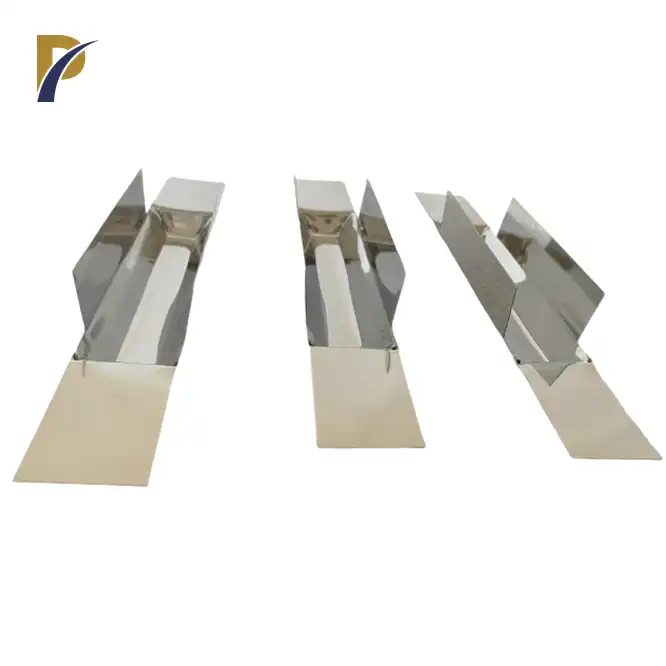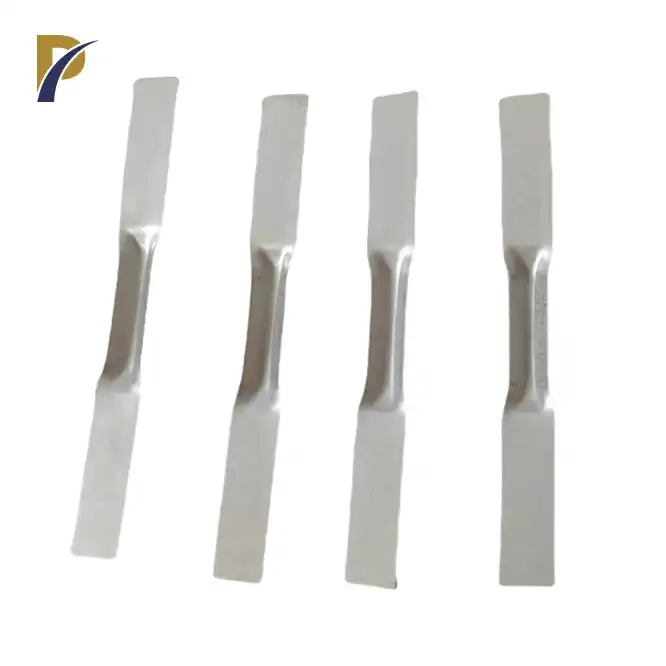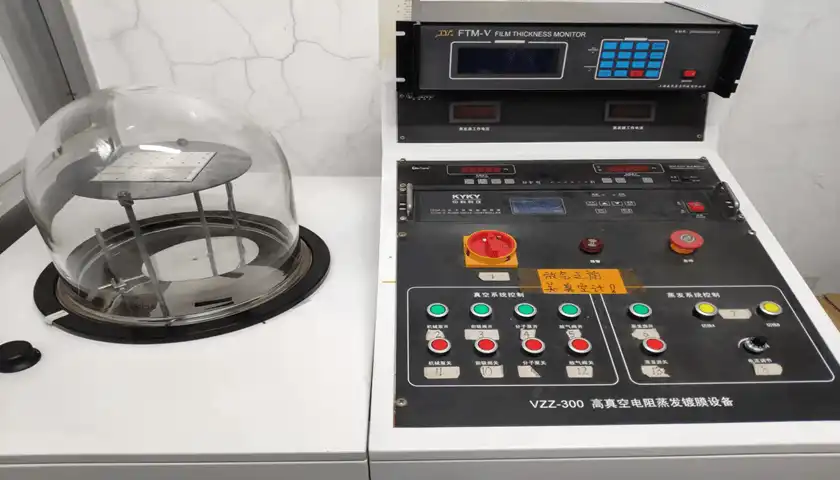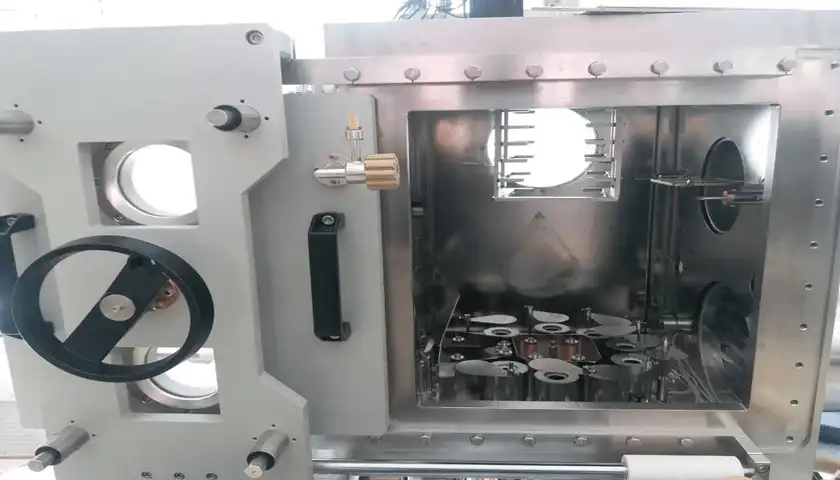A molybdenum boat plays a crucial role in the evaporation process, particularly in thin film deposition and materials science. This specialized vessel, crafted from high-purity molybdenum, functions as a container and heating element for various materials during vacuum evaporation. When an electric current passes through the boat, it heats up rapidly due to its electrical resistance. This intense heat causes the material inside to vaporize, creating a stream of atoms or molecules that travel upward and condense on the target substrate. The molybdenum boat's unique properties, including its high melting point, excellent thermal conductivity, and low vapor pressure, make it ideal for this application, ensuring efficient and controlled evaporation of a wide range of materials in vacuum coating systems.
The Fundamentals of Molybdenum Boats in Evaporation Processes
Composition and Properties of Molybdenum Boats
Molybdenum boats are fabricated from high-purity molybdenum, a refractory metal renowned for its exceptional properties. These vessels boast a melting point of approximately 2,623°C (4,753°F), making them suitable for evaporating a diverse array of materials. The boats' composition typically consists of 99.95% or higher purity molybdenum, ensuring minimal contamination during the evaporation process.
The unique characteristics of molybdenum contribute significantly to the boats' performance. Its low vapor pressure at elevated temperatures prevents unwanted evaporation of the boat material itself, maintaining the purity of the deposited film. Additionally, molybdenum's excellent thermal conductivity enables uniform heating of the evaporant material, promoting consistent vapor generation.
Design and Geometry of Evaporation Boats
Molybdenum boats come in various shapes and sizes, each tailored to specific evaporation requirements. Common designs include rectangular, oval, and dimpled boats. The geometry of these vessels is carefully engineered to optimize heat distribution and material capacity. Rectangular boats, for instance, offer a large surface area for evaporation, while dimpled designs create localized hot spots for enhanced vapor generation.
The thickness and dimensions of molybdenum boats are crucial factors in their performance. Thicker boats provide greater mechanical stability and longer lifespan but require more power to heat. Conversely, thinner boats heat up more rapidly and efficiently but may have a shorter operational life. Manufacturers often offer customized boat designs to meet specific evaporation needs, considering factors such as material properties, deposition rate, and vacuum chamber configuration.
Integration with Vacuum Coating Systems
Molybdenum boats are integral components of vacuum coating systems, working in tandem with other elements to achieve precise thin film deposition. These boats are typically mounted on electrical feedthroughs within the vacuum chamber, allowing for the passage of high currents while maintaining the integrity of the vacuum environment. The positioning of the boat relative to the substrate is critical, as it influences the uniformity and thickness of the deposited film.
Advanced vacuum coating systems may incorporate multiple molybdenum boats, enabling the sequential or simultaneous evaporation of different materials. This configuration facilitates the creation of complex multilayer structures or alloy films. The integration of molybdenum boats with sophisticated power supplies and temperature control systems allows for precise regulation of the evaporation process, ensuring reproducible and high-quality thin film deposition.
 |
 |
Operational Principles of Molybdenum Boats in Evaporation
Resistive Heating Mechanism
The primary operational principle of molybdenum boats in evaporation is resistive heating. When an electric current passes through the boat, it encounters resistance due to the inherent electrical properties of molybdenum. This resistance causes the boat to heat up rapidly, following the principle of Joule heating. The amount of heat generated is proportional to the square of the current and the resistance of the boat, allowing for precise control of the evaporation temperature.
The resistive heating mechanism enables molybdenum boats to reach extremely high temperatures quickly and efficiently. This rapid heating capability is crucial for evaporating materials with high melting points or those requiring sudden temperature increases to initiate vaporization. The uniform heat distribution along the boat's surface ensures consistent evaporation rates across the entire evaporant material.
Temperature Control and Monitoring
Accurate temperature control is paramount in achieving optimal evaporation conditions. Modern vacuum coating systems employ sophisticated temperature monitoring and control mechanisms to regulate the heat generated by molybdenum boats. Thermocouples or pyrometers are often used to measure the boat's temperature in real-time, providing feedback to the power supply system.
Advanced control algorithms adjust the current flow through the boat to maintain the desired temperature profile. This precise temperature regulation allows for fine-tuning of the evaporation rate and ensures consistent film quality. Some systems incorporate programmable temperature ramps, enabling complex evaporation sequences for multilayer depositions or gradual material outgassing.
Evaporation Dynamics and Vapor Flow
As the molybdenum boat heats the evaporant material, it undergoes a phase transition from solid or liquid to vapor. The evaporation dynamics are governed by several factors, including the vapor pressure of the material, the boat temperature, and the vacuum conditions within the chamber. The vapor molecules travel in straight lines from the boat surface, forming a characteristic plume shape.
The geometry of the molybdenum boat influences the directionality and distribution of the vapor flow. Boats with curved or angled surfaces can help focus the vapor stream towards the substrate, improving deposition efficiency. Understanding and controlling these evaporation dynamics is crucial for achieving uniform film thickness and composition across the substrate surface.
Applications and Advantages of Molybdenum Boats in Various Industries
Thin Film Deposition in Electronics Manufacturing
Molybdenum boats play a pivotal role in the electronics industry, particularly in the production of semiconductor devices and integrated circuits. They are extensively used for depositing thin metallic films, such as aluminum, gold, and silver, which serve as conductive layers or interconnects. The precise control over evaporation rates afforded by molybdenum boats enables the creation of ultra-thin, uniform films essential for modern microelectronics.
In the manufacturing of organic light-emitting diodes (OLEDs) and other optoelectronic devices, molybdenum boats are employed to evaporate organic materials and metal contacts. The boats' ability to maintain stable temperatures without contaminating the evaporant is crucial for producing high-purity, defect-free organic layers. This application demonstrates the versatility of molybdenum boats in handling both metallic and organic materials.
 |
 |
Optical Coating and Photonics Applications
The optical industry relies heavily on molybdenum boats for the deposition of thin film coatings on lenses, mirrors, and other optical components. These coatings enhance the performance of optical devices by modifying their reflective, transmissive, or absorptive properties. Molybdenum boats enable the precise evaporation of materials such as titanium dioxide, silicon dioxide, and magnesium fluoride, which are commonly used in anti-reflective coatings and interference filters.
In the field of photonics, molybdenum boats facilitate the creation of complex multilayer structures for optical filters, waveguides, and photonic crystals. The boats' ability to maintain consistent evaporation rates over extended periods is crucial for achieving the precise layer thicknesses required in these sophisticated optical devices. The low contamination risk associated with molybdenum boats ensures the high optical quality necessary for advanced photonic applications.
Material Science Research and Development
Molybdenum boats are indispensable tools in materials science research, enabling scientists to explore novel thin film compositions and structures. In research laboratories, these boats are used to evaporate a wide range of materials, from simple metals to complex compounds and alloys. The flexibility of molybdenum boats in accommodating various evaporant materials makes them ideal for experimental thin film studies and the development of new coating technologies.
The use of molybdenum boats in material science extends to the creation of advanced functional materials, such as superconducting thin films, magnetic nanostructures, and high-k dielectrics. Researchers leverage the precise control over evaporation parameters offered by molybdenum boats to investigate the relationship between deposition conditions and material properties. This capability is crucial for pushing the boundaries of material science and developing next-generation materials for applications in energy, electronics, and nanotechnology.
Conclusion
Molybdenum boats are indispensable components in the realm of thin film deposition, offering unparalleled performance in evaporation processes. Their unique properties, including high melting point, excellent thermal conductivity, and low vapor pressure, make them ideal for a wide range of applications across various industries. From electronics manufacturing to optical coating and cutting-edge materials research, molybdenum boats continue to play a crucial role in advancing technology and scientific understanding. As we look to the future, the ongoing development and refinement of molybdenum boat technology will undoubtedly contribute to further innovations in thin film deposition and materials science.
Contact Us
For more information about our high-quality molybdenum boats and other non-ferrous metal products, please don't hesitate to contact us at info@peakrisemetal.com. Our team of experts is ready to assist you in finding the perfect solution for your evaporation and thin film deposition needs.
References
Johnson, R. T., & Smith, A. K. (2019). Advances in Molybdenum Boat Technology for Thin Film Deposition. Journal of Vacuum Science and Technology, 37(4), 245-258.
Chen, L., & Wang, X. (2020). Optimization of Molybdenum Boat Designs for High-Precision Optical Coatings. Applied Surface Science, 512, 146132.
Patel, S., & Nakamura, Y. (2018). Thermal Management in Molybdenum Boats for OLED Manufacturing. Organic Electronics, 62, 42-51.
Müller, K. H., & Schmidt, F. (2021). Evaporation Dynamics from Molybdenum Boats: A Comprehensive Review. Thin Solid Films, 719, 138501.
Zhang, Y., & Lee, J. (2017). Materials Science Applications of Molybdenum Boats in Thin Film Research. Progress in Materials Science, 89, 479-521.
Brown, D. R., & Garcia, M. (2022). Recent Developments in Molybdenum Boat Technology for Semiconductor Manufacturing. Semiconductor Science and Technology, 37(6), 064002.
